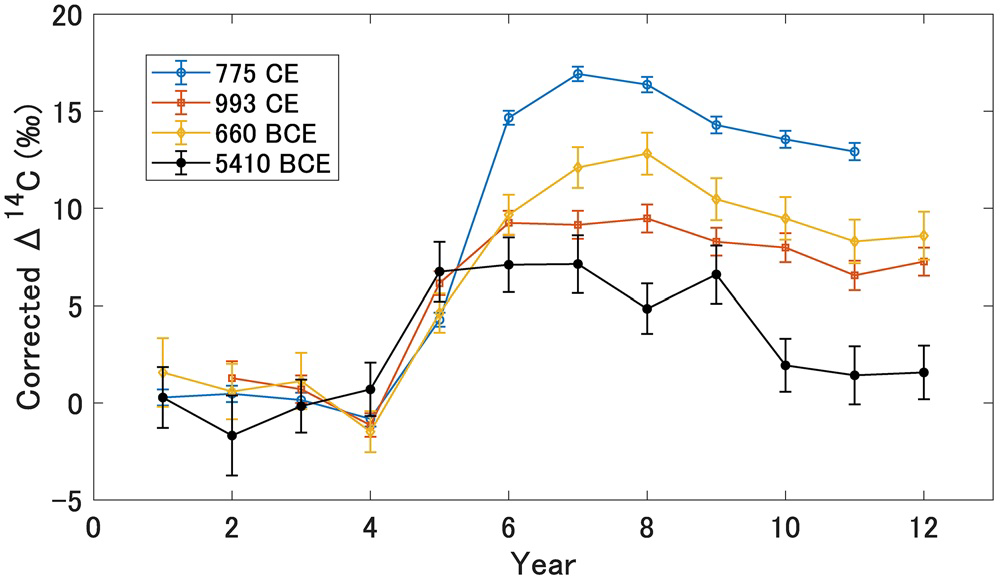Discovery of a large cosmic ray increase in 5410 BCE
2021-06-04
International research group, involving Prof. Fusa Miyake and Kayo Kanzawa of the Cosmic-Ray Division, discovered a signature of cosmic-ray increase from 5411 BCE to 5410 BCE by analyzing carbon-14 in tree rings from California, Finland, and Switzerland.
Carbon-14 is usually produced by galactic cosmic rays which have an origin of outside the solar system, but also produced by solar energetic particles (SEPs) originates from solar eruptions such as a solar flare and a coronal mass ejection. It’s considered that extreme SEP events whose scale is far from the largest SEP event on record were occurred in 775 CE, 993 CE, and ~660 BCE from carbon-14 data of tree-rings. The similarity of the carbon-14 variation of the newly discovered 5410 BCE event with three other events (Figure 1) suggest the origin of the 5410 BCE event is an extreme SEP event. Since such a large cosmic ray increase can be recorded in not only tree-rings but also ice sheets, further application as a time marker to the research field of age dating and stratigraphy can be expected.
The research result was published in Geophysical Research Letters.

Figure 1:Carbon-14 variation of the newly discovered 5410 BCE cosmic-ray event and already known three events in 775 CE, 993 CE, and ~660 BCE.
[Paper information]
Journal:Geophysical Research Letters
Title:A single-year cosmic ray event at 5410 BCE registered in 14C of tree rings Authors:F. Miyake, I. P. Panyushkina, A.J. T. Jull, F. Adolphi, N. Brehm, S. Helama, K. Kanzawa, T. Moriya, R. Muscheler, K. Nicolussi, M. Oinonen, M. Salzer, M. Takeyama, F. Tokanai, L. Wacker
DOI:https://doi.org/10.1029/2021GL093419
Research Spotlight by EOS: https://eos.org/research-spotlights/tree-rings-show-record-of-newly-identified-extreme-solar-activity-event


